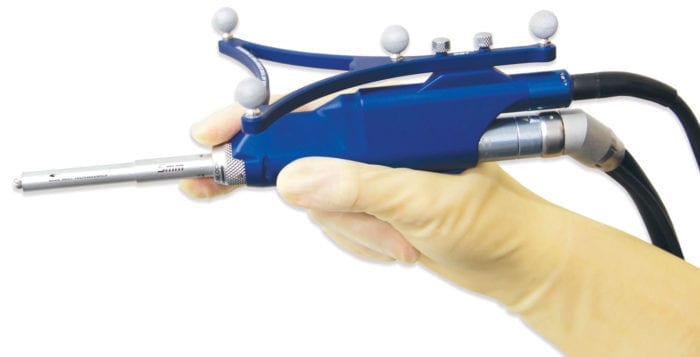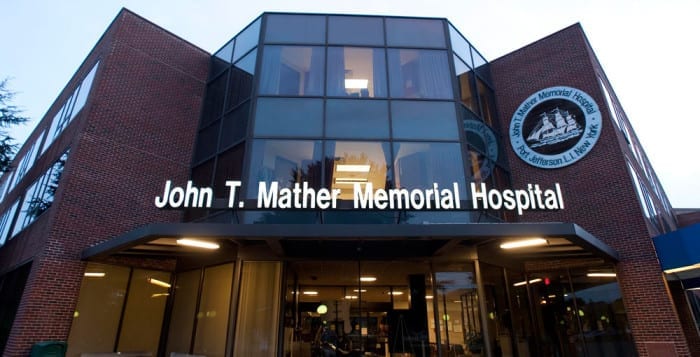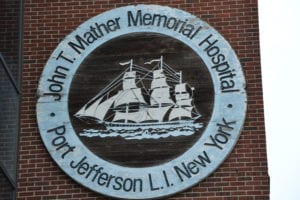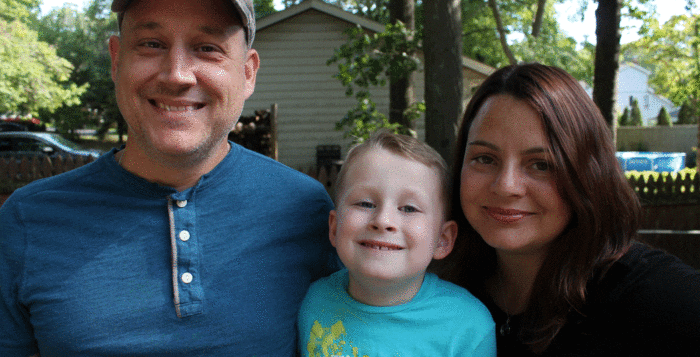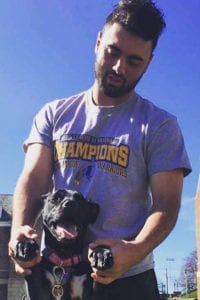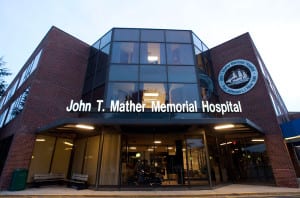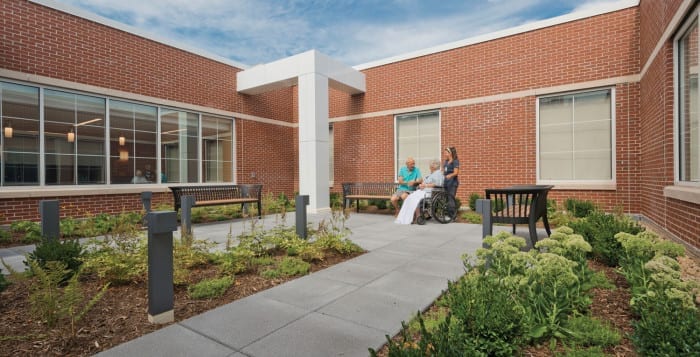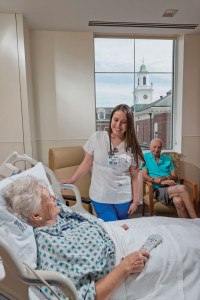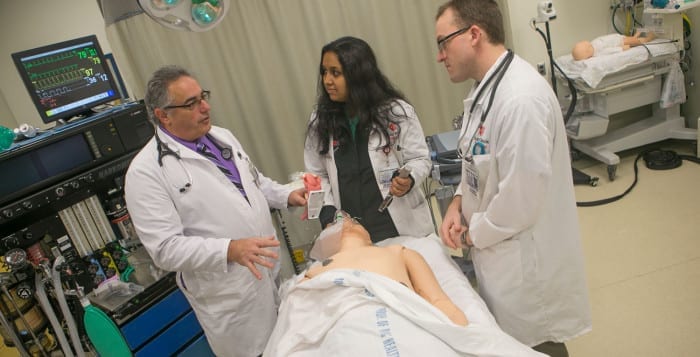By Joseph Wolkin
North Shore natives in need of a total knee replacement can now get a revolutionary surgery right in their own backyard. In July, John T. Mather Memorial Hospital became one of the first in the United States to conduct a robotic-assisted total knee replacement surgery.
Laurie Mullens, a patient at the hospital, hopes she is on her way to being pain-free, following a groundbreaking surgery she received at John T. Mather Hospital in Port Jefferson in late July. She said she has dealt with painful arthritis in her knees for more than a decade.
The 63-year-old Farmingdale resident thought she tried everything to alleviate her knee pain. Mullens was frustrated, as the pain was not allowing her to walk properly. She lived with what she described as severe and sharp pains in her knees, and when treatments failed to reduce her pain, Mullens opted to have knee replacement surgery.
On March 17, Mullens had her first knee replacement surgery at Mather. While recovery time after the surgery usually takes six months to a year, after four months she said she wasn’t feeling positive about her improvement. When the pain continued, she went back to Mather.
Dr. Brian McGinley, who graduated from Columbia University’s College of Physicians and Surgeons, did something different with Mullens. Instead of performing the surgery with only human hands, he opted to have a robot assist in the operation. While the hospital has used robot assistance in partial replacement procedures for about a year, no one had used one for a total knee replacement yet.
“I control the data put in the computer, and I set the parameters of which I want to cut the ends of the bone. The robot allows me to match those parameters by one millimeter of my plan because it is so specific.”
—Brian McGinley
“It’s robotic-assisted surgery, so the robot is controlled by a computer,” McGinley said. “I control the data put in the computer, and I set the parameters of which I want to cut the ends of the bone. The robot allows me to match those parameters by one millimeter of my plan because it is so specific. When I’m cutting the surface of the bone, it turns off if I go more than one millimeter outside where I set it on the computer.”
McGinley opted to use the robot for the entire surgery, as opposed to the partial usage common at Mather.
“They didn’t really tell me anything other than it was there to assist them in doing the surgery,” Mullens said. “It’s just assisting him, so I didn’t have to worry it wasn’t done by a surgeon.”
The surgery featured the Navio Surgical System, which utilizes hand-held robotics. When done with the system, the procedure is meant to produce precise results for knee replacements.
“We’ve been working on this project for two years, and we’ve been using computer-assisted surgery at Mather for many years,” McGinley said. “Now, we have the next-step technology to have surgery that’s robot-assisted. It’s completely safe because we’re still in control, performing the function with the assistance of the robot. There are no real major errors that can be placed in the system. If the power fails, we still have our traditional instruments that we can use.”
According to Blue Belt Technologies, creators of the Navio Surgical System, the robotic devices have led to reports of improved accuracy and repeatability of implant placement.
According to the Centers for Disease Control, there were 757,000 knee replacement surgeries in the United States in 2011.
While the end goal is to make the surgery quicker, Mullens’ surgery took 15 minutes longer than Dr. McGinley would have liked.
“It’s a little slower right now because we’re still trying to figure out the methodology during the procedure,” McGinley said. “I’m expecting to get that time down in the operating room.”
Since her July 20 surgery, Mullens said she has experienced aches and pains similar to the aftermath of her first operation.
“It’s to be expected because I had both knees done,” she said. “It’s very swollen and it’s an uncomfortable recovery. That’s the way it goes. But I’m recovering very quickly — as quickly as to be expected.”
The technology is currently being studied to see what can be improved in order to make it more efficient and eventually more widely used. According to McGinley, the doctors who are using the robot are coming together to see if it is a valid treatment option for patients.

